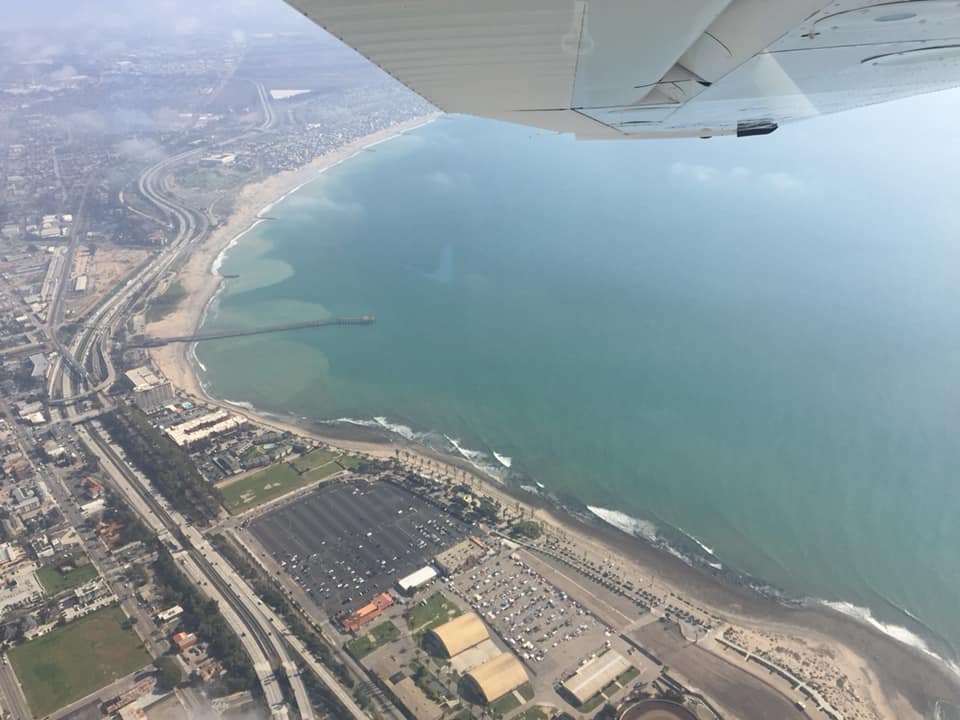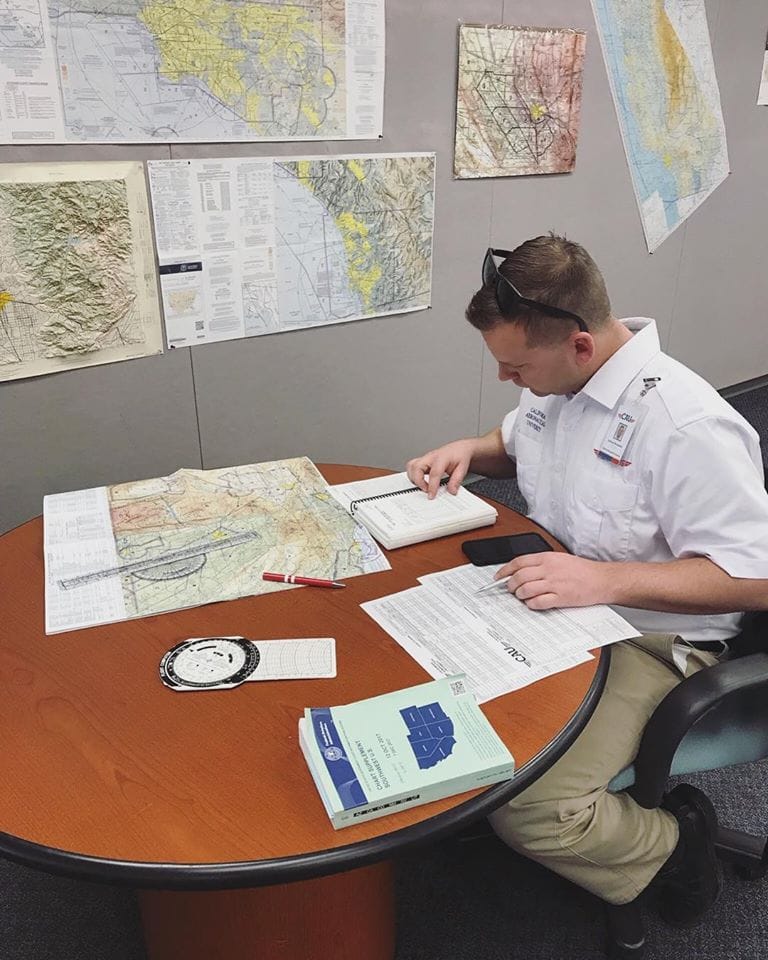Applying for a student pilot certificate is an exciting step! It’s the first move toward becoming a pilot but can be a complex one to navigate.
This article will cover who needs a student pilot certificate, eligibility requirements, privileges and limitations of a student pilot, and how to successfully complete the student pilot application along with the help of a certified flight instructor. Soon after submitting the application, you’ll get your shiny new pilot certificate in the mail and will be soaring toward the skies!
What is a Student Pilot Certificate?
A student pilot certificate is your ticket to the skies! It’s the very first step toward becoming a pilot.
The student pilot certificate allows a student in training to operate an aircraft solo (under supervision of an instructor and with restrictions). A student may begin flight training without a student pilot certificate but must obtain one in order to fly solo and as a prerequisite to obtaining a private pilot certificate.
The training you’ll do as a student pilot lays the groundwork for future flying endeavors. In the U.S., the student pilot certificate is issued by the Federal Aviation Administration (FAA).
Student Pilot Privileges
A student pilot certificate allows a student to operate an aircraft under the supervision of a certified flight instructor. A student pilot may:
-
- Fly solo, under the supervision of a certified flight instructor (CFI)
- Act as pilot-in-command time (PIC) when operating an aircraft solo.
Student Pilot Limitations
Each pilot certificate comes with limitations, and the student pilot certificate is no different. While student pilots may fly solo, there are also rules they must follow. Student pilots may not:
-
- A student pilot may not act as pilot in command of an aircraft:
- That is carrying a passenger;
- That is carrying property for compensation or hire;
- For compensation or hire;
- In furtherance of a business;
- On an international flight, except that a student pilot may make solo training flights from Haines, Gustavus, or Juneau, Alaska, to White Horse, Yukon, Canada, and return over the province of British Columbia;
- With a flight or surface visibility of less than 3 statute miles during daylight hours or 5 statute miles at night;
- When the flight cannot be made with visual reference to the surface; or
- In a manner contrary to any limitations placed in the pilot’s logbook by an authorized instructor.(reference 14 CFR 61.87)
There are further restrictions specific to student sport pilot applicants. A student pilot seeking a sport pilot certificate must comply with the provisions above AND may not act as pilot in command –
-
- Of an aircraft other than a light-sport aircraft;
- At night;
- At an altitude of more than 10,000 feet MSL or 2,000 feet AGL, whichever is higher;
- In Class B, C, and D airspace, at an airport located in Class B, C, or D airspace, and to, from, through, or on an airport having an operational control tower without having received the ground and flight training specified in § 61.94 and an endorsement from an authorized instructor;
- Of a light-sport aircraft without having received the applicable ground training, flight training, and instructor endorsements specified in § 61.327 (a) and (b).
Step-by-Step Process to Get a Student Pilot Certificate
Getting a student pilot certificate is easy! You will first fill out an application, obtained through the FAA website. Then, with the approval of a FAA-authorized individual (usually a Certified Flight Instructor), you’ll submit the application. Once approved, a card similar to a driver’s license is delivered via postal service to your address.
Depending on your method of training, this process may vary slightly. At a Part 61 flight school, a CFI will assist you with your application. At a Part 141 school or a collegiate flight training program, a designated member of the training department may act as the authorized individual for this process. More uncommonly, a designated pilot examiner may assist a student pilot in submitting an application.
Tip: The military does not have the same process for certifying pilots that the FAA does. Certain recruitment programs may encourage an applicant to obtain an FAA pilot certificate prior to applying for a military pilot slot, in which case a student would follow this process. However, the military processes are entirely separately from the FAA, so this step will not be applicable to pilots who begin flight training in the military.
 Step 1: Check Your Eligibility
Step 1: Check Your Eligibility
To obtain a student pilot certificate, there are certain pre-requisites you must meet before hand. And beyond that, to be a pilot in command of an aircraft, you also have to meet medical requirements.
Student Pilot Eligibility Requirements
Student pilot applicants must:
-
-
- Be at least 16 years old (or 14 years old for glider and balloon)
- Read, speak, write, and understand English
-
Tip: You can begin flight training before age 16, but since a student pilot certificate is required to solo, you must always fly with an instructor before age 16 (for powered aircraft).
Pilot Medical Eligibility Requirements
To act as pilot in command of an aircraft, along with a student pilot certificate, you must have a valid aviation medical certificate or comply with the FAA BasicMed Program. An aviation medical certificate can be obtained from a designated Aviation Medical Examiner. Check with your flight school for a list of aviation medical examiners in your area, or contact a flight instructor for more information about BasicMed.
There are three types of aviation medical certificates: First Class, Second Class, and Third Class.
-
-
- First class medical certificates are intended for airline pilots.
- Second class medical certificates are required for airline pilots operating as second-in-command and other commercial pilots.
- Student pilots and private pilots not using BasicMed are required to have at least a third-class medical certificate to act as pilot in command.
-
Student pilots who want to become airline pilots may want to ensure they can pass a first-class medical, as it’s requirements are more stringent. This is a good idea, however, only a third-class medical is required for student pilots and private pilots. Medical certificates each have their own expiration guidelines. Reference CFR 61.23 for more information.
 Step 2: Register & Apply with the FAA
Step 2: Register & Apply with the FAA
The first step toward completing your student pilot certificate is to create a login for IACRA (Integrated Airman Certification and Rating Application) at iacra.faa.gov.
You’ll be assigned an FTN number.
Tip: Keep this number somewhere safe- it will stay with you for the longevity of your flying career. You’ll reference it each time you apply for a new certificate.
Fill out the application, entering all known information. There are many tips and tricks out there for how to do this properly-including from the FAA website. A certified flight instructor can also assist you to make sure it’s completed properly.
Tip: Contact your Recommending Instructor before filling out your application to ensure a seamless process.
 Step 3: Verify Your Identity
Step 3: Verify Your Identity
You can submit your application, but your application is NOT complete until you meet with a certified flight instructor (CFI) or a designated pilot examiner (DPE), or another authorized individual at your flight school. This person will act as a Recommending Instructor (RI) in IACRA and will complete the process after verifying your identity, birthdate, and English language proficiency. You must bring valid photo ID to that meeting.
 Step 4: Complete Your Application
Step 4: Complete Your Application
Once you and your recommending instructor have completed and submitted your application, you should receive your student pilot certificate in the mail within three weeks.
In the meantime, a paper temporary certificate will become available for printing within a few days to a week in IACRA. You may exercise privileges of a student pilot with a temporary certificate.
Tip: Student pilot certificates don’t expire; they are just surrendered once a higher certificate is obtained.
Ready to soar in your aviation career?








